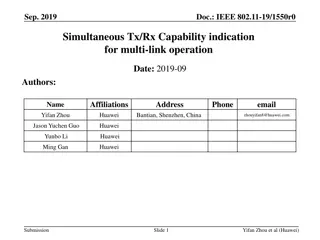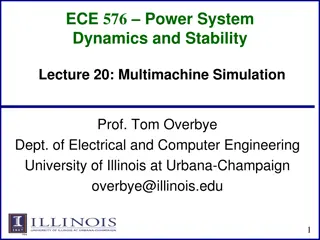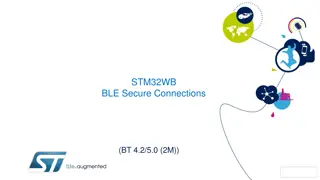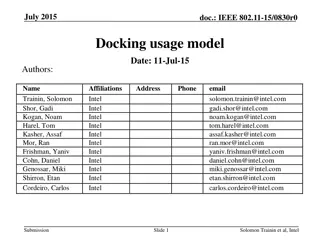Minimum Direct Connections to Achieve Simultaneous Access
In a computer science laboratory with 15 workstations and 10 servers, the minimum number of direct connections needed to ensure that any set of 10 or fewer workstations can simultaneously access different servers is determined using the Generalized Pigeonhole Principle. By strategically connecting workstations to servers, it is shown that a total of 60 direct connections are required to meet the access requirements. Any fewer connections would result in some servers being unable to connect to enough workstations, thus necessitating at least 60 direct connections for optimal functionality.
Download Presentation

Please find below an Image/Link to download the presentation.
The content on the website is provided AS IS for your information and personal use only. It may not be sold, licensed, or shared on other websites without obtaining consent from the author. Download presentation by click this link. If you encounter any issues during the download, it is possible that the publisher has removed the file from their server.
E N D
Presentation Transcript
Discrete Math: Example 4 of The Generalized Pigeonhole Principle
Example 4 The Generalized Pigeonhole Principle Suppose that a computer science laboratory has 15 workstations and 10 servers. A cable can be used to directly connect a workstation to a server. For each server, only one direct connection to that server can be active at any time. We want to guarantee that at any time any set of 10 or fewer workstations can simultaneously access different servers via direct connections. Although we could do this by connecting every workstation directly to every server (using 150 connections), what is the minimum number of direct connections needed to achieve this goal?
Solution Suppose that we label the workstations W1, W2, . . . , W15 and the servers S1,S2,...,S10. Furthermore, suppose that we connect Wk to Sk for k = 1,2,...,10 and each of W11, W12, W13, W14, and W15 to all 10 servers. We have a total of 60 direct connections. Clearly any set of 10 or fewer workstations can simultaneously access different servers. We see this by noting that if workstation Wj is included with 1 j 10, it can access server Sj , and for each workstation Wk with k 11 included, there must be a corresponding workstation Wj with 1 j 10 not included, so Wk can access server Sj . (This follows because there are at least as many available servers Sj as there are workstations Wj with 1 j 10 not included.)
Solution Now suppose there are fewer than 60 direct connections between workstations and servers. Then some server would be connected to at most 59/10 = 5 workstations. (If all servers were connected to at least six workstations, there would be at least 6 10 = 60 direct connections.) This means that the remaining nine servers are not enough to allow the other 10 workstations to simultaneously access different servers. Consequently, at least 60 direct connections are needed. It follows that 60 is the answer.
References Discrete Mathematics and Its Applications, McGraw-Hill; 7th edition (June 26, 2006). Kenneth Rosen Discrete Mathematics An Open Introduction, 2nd edition. Oscar Levin A Short Course in Discrete Mathematics, 01 Dec 2004, Edward Bender & S. Gill Williamson























